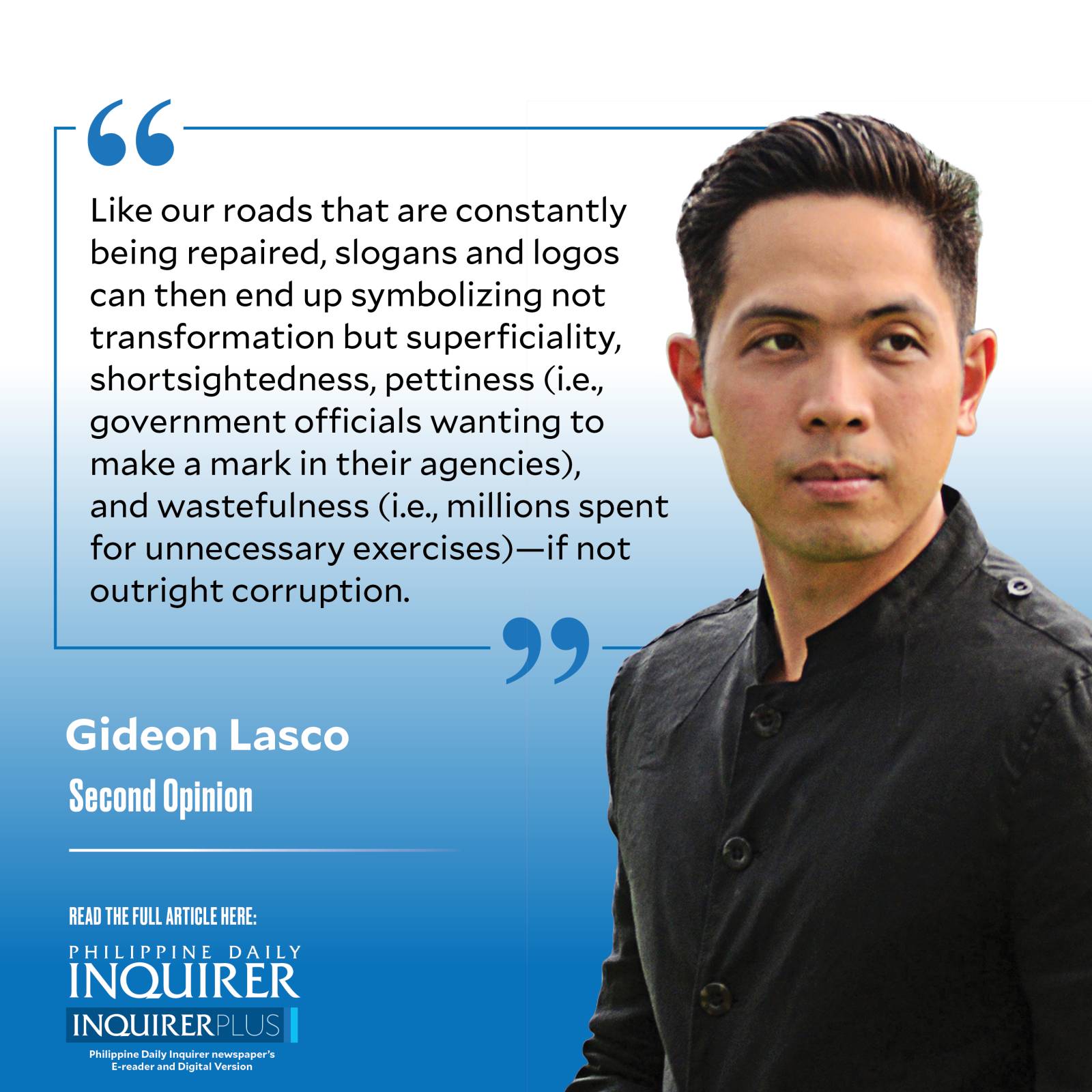Slogans over substance

Politicians and government officials love new logos and slogans.
In the past few weeks alone, the Department of Tourism (DOT) launched a new slogan—”Love The Philippines”—followed by the Philippine Amusement and Gaming Corp. or Pagcor’s release of a new logo, and then, as we found out this week, President Marcos himself has launched “Bagong Pilipinas” as his government’s “brand of governance and leadership,” accompanied not just with a logo, but with an order—Memorandum Circular No. 24—commanding not just government agencies but government-owned and -controlled corporations and even state universities and colleges to adopt the logo and “incorporate the same” in their communications.
There are valid questions about the necessity, cost, and procurement of some of these new logos and slogans, especially in light of reports that Pagcor paid P3 million for its new logo, and DOT spent P49 million for its tourism campaign.
There are also valid questions about their creative quality. In the case of Pagcor, the overwhelming sentiment is that the logo was substandard and worse than the original, with netizens quickly putting together alternative designs to prove their point. To be fair, logos will never please everybody, and neither countries nor corporations are exempt from “logo epic fails.” Still, especially with millions of taxpayer money spent, there is the understandable expectation that they better be good.
Finally, there are also valid questions over whether government cares at all about public feedback. If we had the government with high standards of integrity, a failed design would have been sufficient grounds for resignation, to say nothing about plagiarism. But just as the Duterte administration insisted on the “rubber band” logo of the 2019 Southeast Asian Games, Pagcor is insisting on its new logo—“that’s a management prerogative,” says its chair—never mind what the public thinks.
On top of these vexing issues, there is a more fundamental question that begs to be asked: Why the obsession over logos and slogans?
It’s not just Mr. Marcos. His father touted his “Bagong Lipunan” and emblazoned it in coins, bills, and postage stamps. Gloria Macapagal Arroyo trumpeted her “Strong Republic,” putting it on Manila Metro Rail Transit System tickets alongside her helmet-wearing face. Benigno Aquino III had his “Daang Matuwid” and wore yellow ribbons; Rodrigo Duterte wore “DU30” shirts and his clenched fist, although in fairness, they never imposed such personal iconography to government agencies.
These agencies, meanwhile, seem as obsessed with logos and slogans as their principals. DOT keeps replacing its slogans—from “Wow Philippines” (2002) and the short-lived “Pilipinas Kay Ganda” (2010) to “It’s More Fun in the Philippines” (2012) to the now controversial “Love the Philippines.” Even as other countries have stuck to their tried and tested taglines: “Malaysia, Truly Asia” (since 1999), “100% Pure New Zealand” (since 1999), “Incredible India” (since 2002), it seems that our tourism chiefs are behaving like politicians who want to erase their predecessors’ legacies.
Since its founding as the Central Bank of the Philippines in 1949, what is now the Bangko Sentral ng Pilipinas, has had several logos, with most recent changes in 1978, 1993, 2010, and 2020. In contrast, its Malaysian and Thai counterparts—Bank Negara Malaysia and Bank of Thailand, have had just one logo since their founding in 1964 and 1942 respectively.
In saying all of the above, I don’t deny the possibility that there is wisdom in a stylistic makeover (I can think of several government agencies that need one). Moreover, accompanied by substantive reforms that are felt by the people, logos and slogans can symbolize transformative change, and when the process of making them taps into people’s creativity (e.g., holding a public contest instead of awarding it to some entity sans transparency), they can signal inclusiveness.
The worrisome alternative is that our government’s obsession with new logos and slogans is rooted in a desire to project a false sense of novelty and achievement, while actually masking old and problematic ways of thinking and doing. Like our roads that are constantly being repaired, slogans and logos can then end up symbolizing not transformation but superficiality, shortsightedness, pettiness (i.e., government officials wanting to make a mark in their agencies), and wastefulness (i.e., millions spent for unnecessary exercises)—if not outright corruption.
—————-
glasco@inquirer.com.ph




















